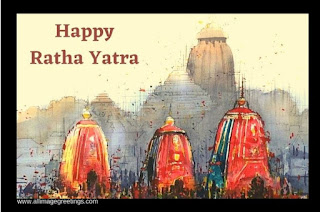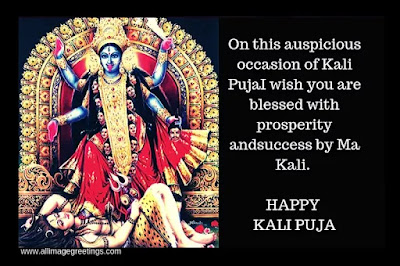Historically, Ratha Yatra's processions have been common in Vishnu-related (Jagannath, Rama, Krishna) traditions in Hinduism across India. In Shiva-related traditions, saints and goddesses in Nepal, along-with Tirthankaras in Jainism. Also among the tribal folk religions found in the eastern states of India.
A few notable Ratha Yatras in India include the Rath
Yatra of Puri, the Dhamrai Ratha Yatra, and the
RathaYatra of Mahesh. Hindu communities outside
India, those who are associated with Jagannath, Krishna, Shiva, and
Mariamman, such as in Singapore, celebrate Ratha
Yatra.
Ratha Yatra has religious origins and meaning,
according to Knut Jacobsen, also the events have a
major community heritage, social sharing, and
cultural significance to the organizers
and participants.
RATH YATRA HISTORY
This festival covers the annual ceremonial procession
of Lord Jagannath, his elder brother Balabhadra and
younger sister Subhadra, from their home temple to
another temple which is located in what is believed
to be their aunt's home.
This journey is believed to be the oldest Rath Yatra or
chariot procession in the world. This journey is
documented in undated Hindu sacred texts are known
as the Puranas which are believed to have been
written a few thousand years ago.
This is the only festival in the world where deities are
taken out of temples to travel to devotees, and it is
also the largest chariot procession in the world.
Millions of people come to watch as a "king" sweeps
the road with a golden mop and three massive 18-
wheeled chariots bearing the sibling deities make
they're the way through massive crowds.
Their chariots are
constructed over 42 days from over 4,000 pieces of
wood, which are mini architectural marvels, by the
only family that has the hereditary rights to make
them.
Legend says it always rains on the day of the
procession. The temple doors are shut and no one is
allowed inside, for a whole week before, because it is
believed that the sibling deities have a fever after
bathing in the sun with 108 pitchers of water. The
subsiding of their fever calls for a change of scene,
which is why they go to their aunt's home for a few
days.
 |
rath yatra wishes image 2023
|
 |
rath yatra wishes pic
|
 |
rath yatra image
|
 |
jagannath photo
|
 |
rath yatra wishes image
|
 |
rath yatra wishes sms
|
 |
happy rath yatra status
|
 |
happy rath yatra wishes images
|
 |
rath yatra wishes photo
|
 |
rath yatra wishes pictures
|
 |
rath yatra image wishes
|
 |
happy rath yatra
|
 |
rath yatra image 2022
|
 |
rath yatra image
|
What is the legend of the sibling deities?
These three deities are fashioned from wood, cloth,
and resin, unlike the ornate, carefully crafted metal
idols everywhere else. They are deformed with large
heads and no arms which stands as a reminder of the
legend of an impatient King.
The legend begins in different ways.
One speaks of an arrogant Indrayumna, who was the
King of Puri in the east. He is believed to have tried
to steal the Hindu god Krishna's heart.
It had been immersed in the legendary Dwarka sea
after his cremation and had reappeared to the tribe's
people of the place as an idol.
The idol disappeared when Indrayumna tried to claim
its possession. The repentant king sought absolution
from Krishna by sanctifying him in another form.
Another speaks of how Krishna's grief-struck siblings
his elder brother Balabhadra and younger sister
Subhadra- rushed into the Dwarka sea carrying his
half-cremated body. King Indrayumna dreamed that
Krishna's body had floated back upon his shores as a
log, at the same moment.
This is where the two legends merge: Indrayumna
decided to build a temple to house the log. His next
task was to find someone to craft the idols from it.
Legends say that Vishwakarma, God's architect,
arrived as an old carpenter. He agreed to carve the
idols, but on the condition that he was not to be
disturbed.
However, the worried and impatient King threw the
door open, when he did not emerge from his
workshop for weeks, going without food, water, or
rest. At that time the idols were only half-built, but
the carpenter disappeared. Still, believing the idols to
be made from the very body of God, the King
sanctified them and placed them in the temple.
When the deities disintegrate, they are remade in the
same half-done condition with new wood every 12
years. They were last remade in 2015.
RATH YATRA MEANING
Srila Prabhupada explained the meaning of Ratha
Yatra in very easy and simple words. To quote him,
"Ratha Yatra is the meditation on bringing Krishna
back into our hearts. Krishna resides within the heart
of all living beings, but we have forgotten Him.
The real purpose of spiritual life is to make our heart
a suitable home for God to reveal Himself to us. If
we are inviting God to reveal himself in our hearts it
must be clean. But if our hearts have accumulated the
dirt of lust, envy, arrogance, greed, anger and
illusion then He will not be happy to reveal His home
within our heart.
The purpose of every great spiritual path in this world
is to help one another to honestly and sincerely clean
our hearts, to cultivate the character of humility,
charity, love for God and compassion to all beings.”
RATH YATRA 2023 DATE
This year’s Rath Yatra has fallen on Tuesday, 20 June
RATH YATRA AT PURI
Ratha Yatra, is celebrated every year at Puri, also
known as the temple town in Odisha. THE RATH
YATRA IS CELEBRATED on the second (dwitiya)
day of shukla pakhya (waxing cycle of moon) of
Ashadha Maasa (3rd month in Lunar Calendar).
With his celestial wheel (Sudarshana Chakra) Lord
Jagannath with his brother Lord Balabhadra and his
sister Goddess Subhadra, the presiding deities of the
Jagannath Temple, Puri's main temple, are removed
from the temple in a ceremonial procession to their
chariots,Multitude of devotees pulls the huge,
colourfully decorated chariots on the bada danda or
the grand avenue to the Gundicha Temple (Gundicha
– King Indradyumna's Queen), two miles away to the
North. On the way, Nandighosa, the chariot of Lord
Jagannatha, waits near the crematorium of Bhakta
Salabega a Muslim devout to pay him tribute.
The three deities stop for a while near the Mausi Maa
Temple (Aunt's abode), on their way back from the
Gundicha Temple, and have an offering of the Poda
Pitha, supposed to be the Lord's favourite, which is a
special type of pancake. The deities return to their
abode, after a stay for seven days.
THE RATH YATRA OF LORD JAGANNATH
Perhaps, there is no other procession in India as grand
as the Lord JAGANNATH RATH YATRA.
The importance of the Rath Yatra is massive for a
person, who longs for spiritual merit and final
liberation. Anyone who pulls the rope linked to the
chariots of the deities or helps others to do so or
merely touches the rope of the chariot, is believed to
receive the merit of several penances. All the
paraphernalia linked to the Lord Jagannath Rath
Yatra becomes one with the deity himself.
The glimpse of Lord Jagannath and his siblings at
Gundicha Temple can never go vain. It is believed
that it bestows the boon of a hundred horse sacrifices,
which only the luckiest kings had the privilege to
perform in the olden days.
ULTA RATH
Ulta Rath, widely known as Bahuda Yatra or Ulto
Rath, is the return procession of Puri's Jagannath Rath
Yatra chariots from the Gundicha Temple after eight
days.
Apart from devotees from the country, people from
Australia, Spain, America, Peru, Britain, France,
Brazil, Russia, China also takes part in the return car
festival at ISKCON, Mayapur with more than 30,000
people pulling the chariots.
The journey is marked by beating of bells and 'khol'
(drums) and blowing of conch shells and traditional
dances are also performed in front of the chariots.
The ecstasy is doubled as everyone pulls the chariots
with greater speed, allowing themselves to be
completely drenched in rain waters. There is kirtan
going on and everywhere devotees are seen dancing
for the Harinam.
It is a colorful parade of different band groups,
dioramas depicting various lilas, girls dancing, and
kirtan parties in front of each chariot.
ULTA RATH YATRA 2023 DATE
This year's Ulta Rath Yatra is on 8th of July, exactly
a week after Rath Yatra.
RATH MELA
Rath Mela can be loosely translated to The Chariot
Festival’s Fair. It’s basically hosted in the eastern
regions of India. It has that typical Indian flavor,
scattered in its air. There are shops of different
accessories and foods and idols.
And the crowd is always tremendously jam-packed.
There are balloons and bubbles and even different
toys. It’s an experience to never miss. There isn’t a
person who isn’t excited. From a toddler to her
grandfather, all of them smiling ear to ear.
Many people buys day to day requirements from such
fairs, as they find all the things in one place and even
much cheaper and authentic. Many folks from different
regions also put up a shop to sell hand-made arts and
such.
Another very important part of these fairs are some
really fun amusements like roller coaster and toy trains
for the kids. It’s fun to watch them enjoy! Sometimes,
there are functions held and songs of the Lord are
sang. All-in-all an absolute worthy experience to
remember.
ISKCON RATHA YATRA
The origins of the Jagannath Temple of Rajapur, a
ubiquitous village not far from Bengal’s seat of
Vaishnav culture and learning, Nabadwip in Nadia
district, is buried in legends.
Apparently, the idols were carved nearly 500 years
ago, after a local devotee received divine instructions.
However, owing to lack of patronage and care, the
temple was lost and gradually faded from people’s
memory. According to some sources, the ruined temple
was unearthed in the late 1950s by the owners of the
plot. The idols were found almost intact and re-
installed by the family in a new temple.
However,
when the family found it difficult to continue with the
daily rituals and running of the temple, they handed it
over to the International Society of Krishna
Consciousness (ISKCON), whose headquarters are
located in nearby Mayapur.
The chariots from Rajapur travel to the ISKCON
headquarters in Mayapur, about 5km away by road,
accompanied by a huge procession with devotees
playing musical instruments, singing and dancing to
hymns. The Gundicha Temple, where the idols reside
for the next seven days, is located near the Prabhupada
Ghat on the Ganga River. Religious discourses and
cultural programmes are held during the festival.
Hey! Thank you!
Thank you for visiting our page! Hope you’ve liked
our work. We are here to help you out in whatever
way we can. Check out other titles and learn. Feel free
to share our content with your friends and families. We
are providing you content regarding – Rath Yatra 2023,
Rath Yatra History, Rath Yatra Meaning, Rath Yatra
2023 Date, Rath Yatra At Puri, The Rath Yatra Of Lord
Jagannath, The Rath Yatra Is Celebrated, Jagannath
Rath Yatra, Ulta Rath, Ulta Rath Yatra 2023 Date,
Rath Mela, Iskcon Ratha Yatra, Jagannath Photo, Rath
Yatra Image.

















.jpg)


